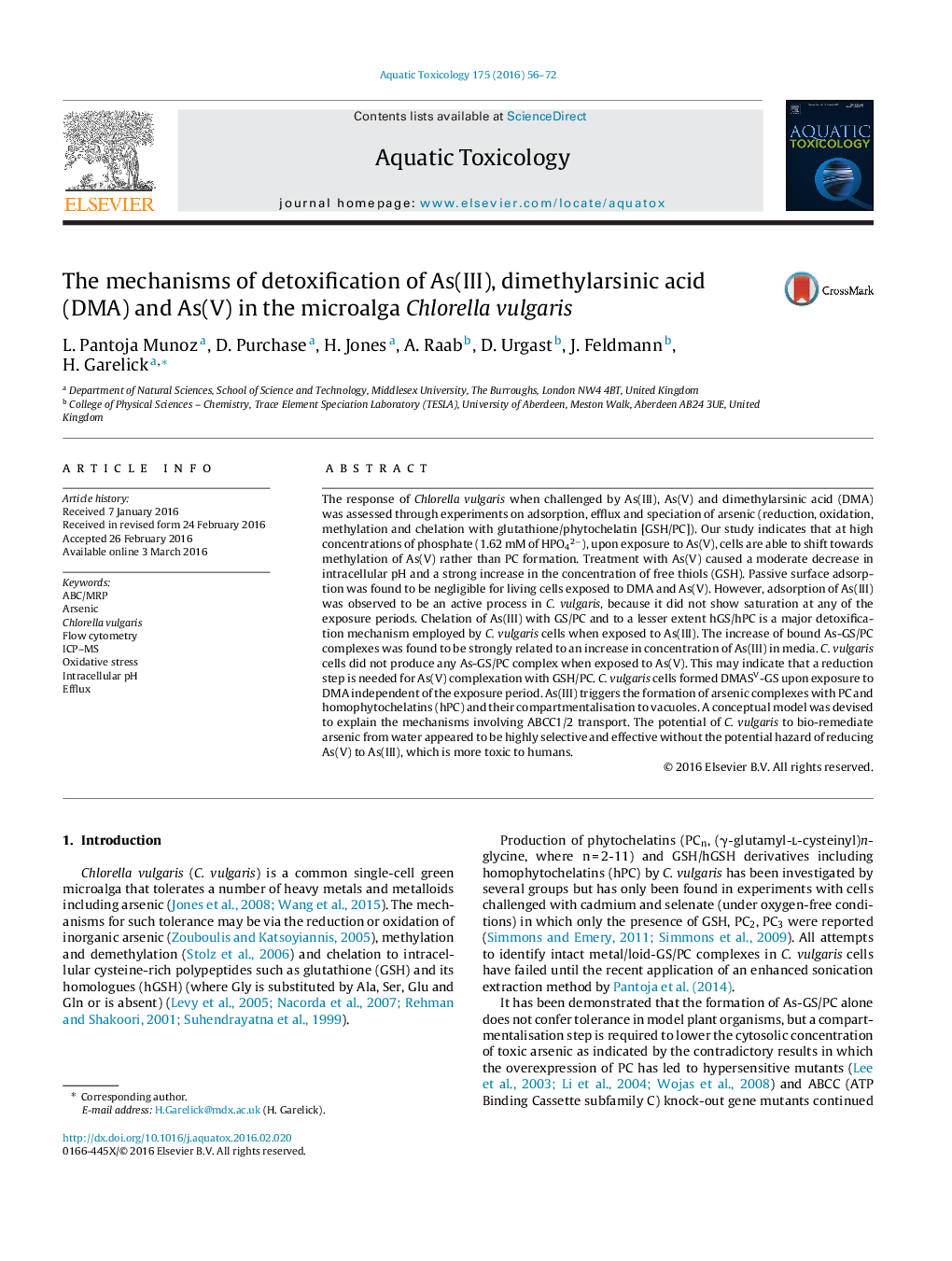| Article ID | Journal | Published Year | Pages | File Type |
|---|---|---|---|---|
| 4528835 | Aquatic Toxicology | 2016 | 17 Pages |
•A conceptual model to explain As-complex transport in C. vulgaris is proposed.•C. vulgaris exports As(III) to vacuoles, lessens oxidative harm and sustains growth.•Exposure to As(V) elicits a change in intracellular pH, not oxidative damage.•The potential to transform As(V) into more toxic to humans As(III) is very low.•C. vulgaris is better suited to bioremediate As(III) than As(V) from water.
The response of Chlorella vulgaris when challenged by As(III), As(V) and dimethylarsinic acid (DMA) was assessed through experiments on adsorption, efflux and speciation of arsenic (reduction, oxidation, methylation and chelation with glutathione/phytochelatin [GSH/PC]). Our study indicates that at high concentrations of phosphate (1.62 mM of HPO42−), upon exposure to As(V), cells are able to shift towards methylation of As(V) rather than PC formation. Treatment with As(V) caused a moderate decrease in intracellular pH and a strong increase in the concentration of free thiols (GSH). Passive surface adsorption was found to be negligible for living cells exposed to DMA and As(V). However, adsorption of As(III) was observed to be an active process in C. vulgaris, because it did not show saturation at any of the exposure periods. Chelation of As(III) with GS/PC and to a lesser extent hGS/hPC is a major detoxification mechanism employed by C. vulgaris cells when exposed to As(III). The increase of bound As-GS/PC complexes was found to be strongly related to an increase in concentration of As(III) in media. C. vulgaris cells did not produce any As-GS/PC complex when exposed to As(V). This may indicate that a reduction step is needed for As(V) complexation with GSH/PC. C. vulgaris cells formed DMASV-GS upon exposure to DMA independent of the exposure period. As(III) triggers the formation of arsenic complexes with PC and homophytochelatins (hPC) and their compartmentalisation to vacuoles. A conceptual model was devised to explain the mechanisms involving ABCC1/2 transport. The potential of C. vulgaris to bio-remediate arsenic from water appeared to be highly selective and effective without the potential hazard of reducing As(V) to As(III), which is more toxic to humans.
